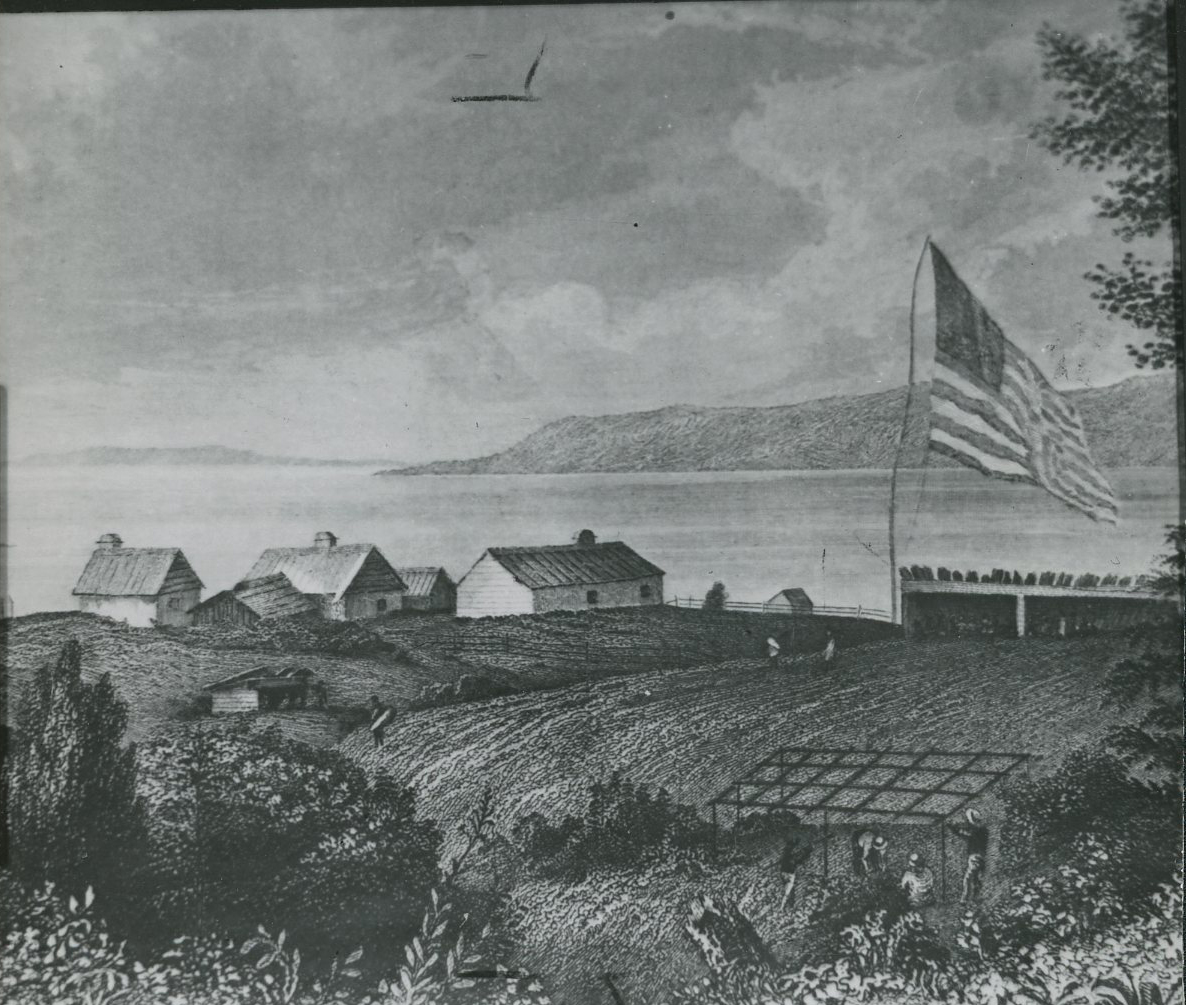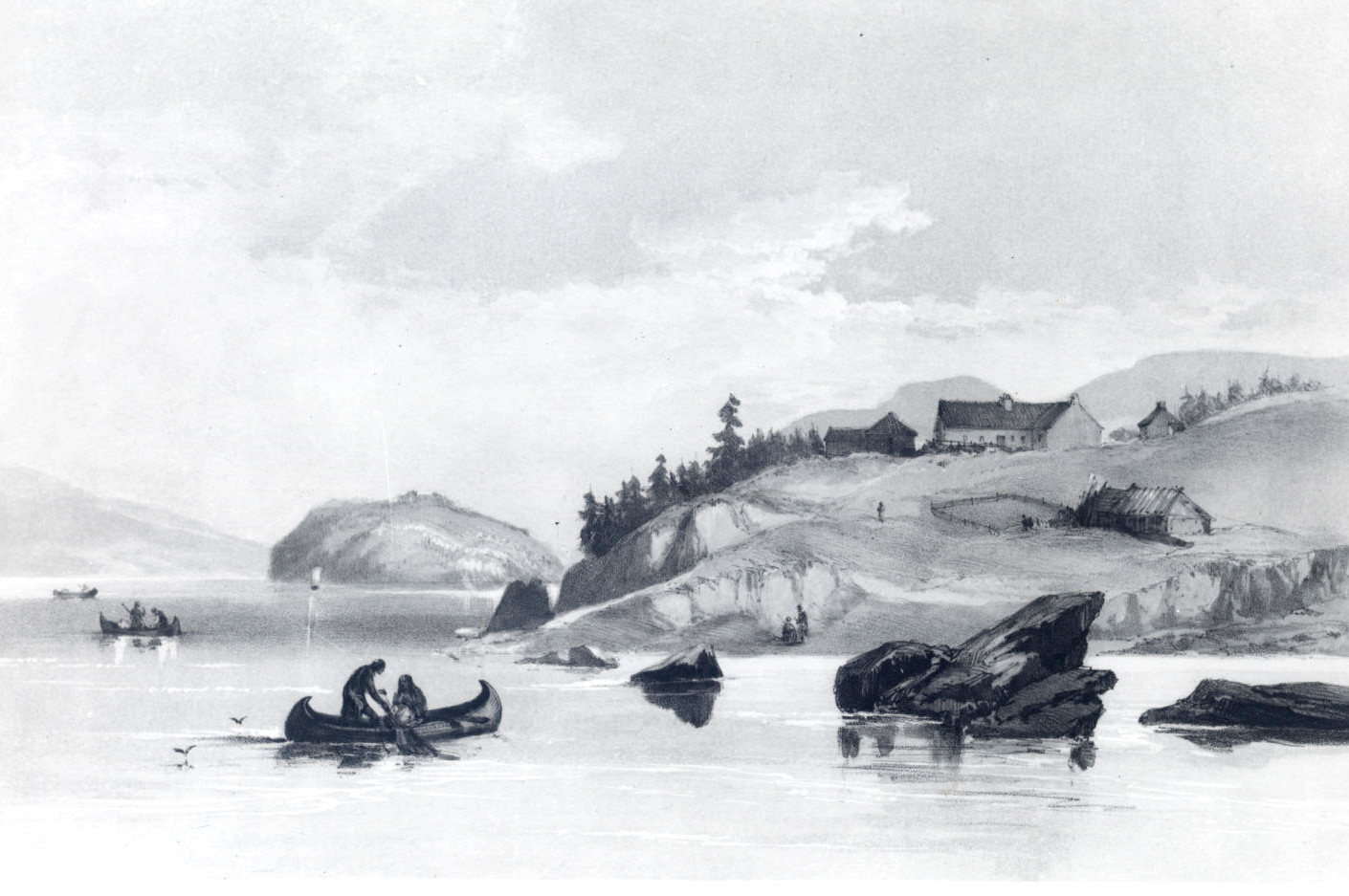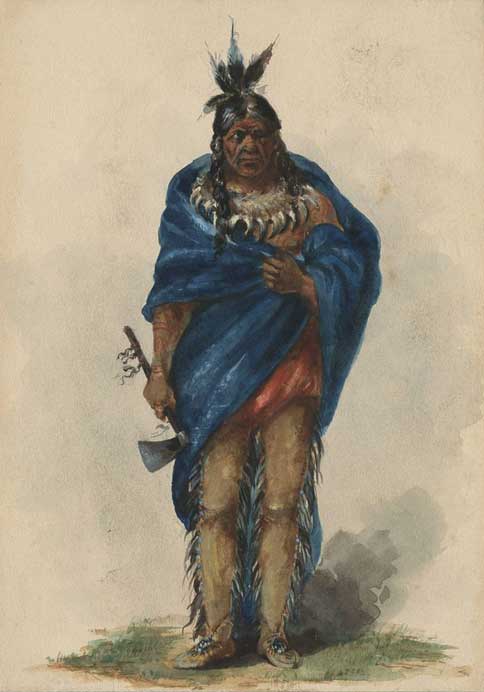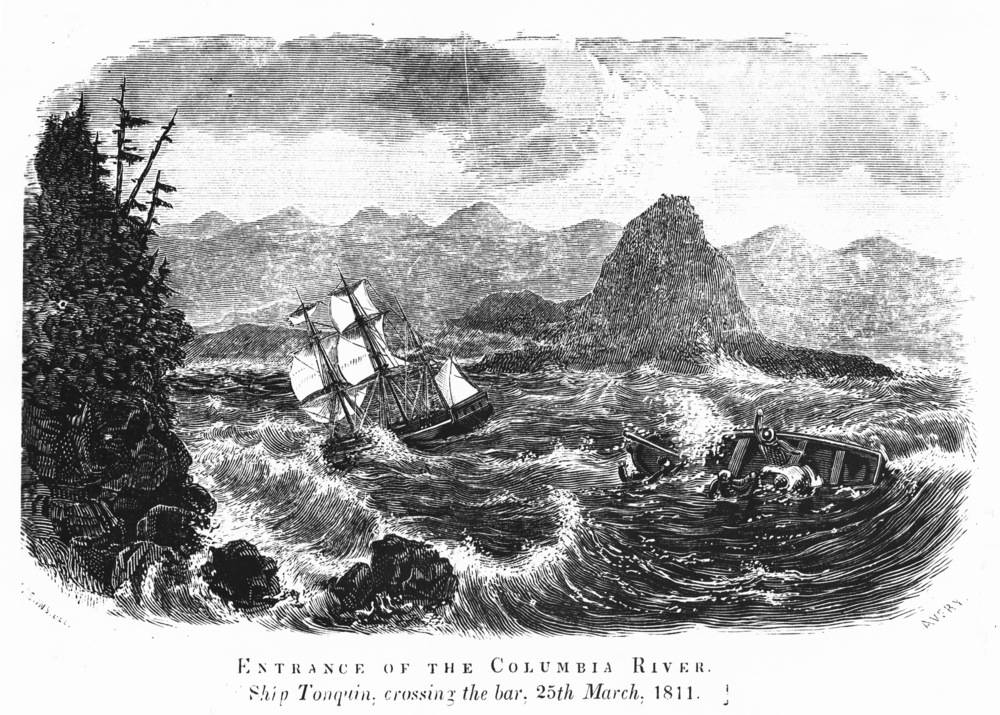Jane Barnes is credited with being the first European woman to set foot in the Oregon Country. Originally a barmaid in Portsmouth, England, Barnes was recruited by North West Company partners John McDonald and Donald McTavish to sail aboard their company’s ship Isaac Todd as a seamstress, though it is believed she was also the mistress of one or both men.
In March 1813, the Isaac Todd sailed from Portsmouth as a letter of marque, a privateer whose mission was to seize Fort Astoria from the American-owned Pacific Fur Company. By the time the slow-sailing ship arrived at the mouth of the Columbia River in April 1814, the fort had become a North West Company property, renamed Fort George after the British monarch.
The unexpected arrival of Jane Barnes caused a considerable stir. Ross Cox, a clerk at the fort, recounted in his 1831 memoir that the “flaxen-haired, blue-eyed daughter of Albion” was a sensation. “She had rather an extravagant wardrobe,” he wrote. “One day, her head, decorated with feathers and flowers, produced the greatest surprise; the next, her hair, braided and unconcealed by any covering, excited equal wonder and admiration.”
According to Cox, Barnes drew the attention of a son of the Chinook chief Concomly, who, after his proposals of marriage were refused, announced he would no longer visit Fort George while she was in residence. Later, Cox claimed, the young man was thwarted in a plan to abduct Barnes during one of her riverside strolls, a practice she engaged in while the company men dined. Barnes was also reportedly the center of what appears to have been a love triangle. McTavish and company partner Alexander Henry (the Younger) were both enamored of her, and Henry dedicated many journal entries to her activities and concerns about her safety.
By late May, the partners had concluded that Barnes’s continued presence at Fort George would hinder operations. Both McTavish and Henry drowned in a boat accident that month, and the decision was made to send her back to Portsmouth. Sometime in the autumn of 1814, Barnes shipped out aboard the merchantman Columbia, which stopped at Sitka, Alaska, and Canton, China, before sailing to England.
Jane Barnes’s presence on the lower Columbia earned her dubious titles, including Oregon’s First Lady and First White Woman in Oregon. She has also been the subject of jokes, as in the Jane Barnes Revue in Astoria, a charity event in which men dress up as nineteenth-century floozies. She was even cast as a kind of frontier femme fatale in Nard Jones’s 1941 novel Scarlet Petticoat.
Although mocked over the years, even by historians, for being poorly educated and ill-mannered, Barnes received a sympathetic treatment from historian George Quimby, who saw her as a strong woman able to adapt to circumstances in a challenging world dominated by men. “In terms of gaining upward mobility within the rigid class structures of early 19th-century England,” Quimby wrote in a 1980 Pacific Northwest Quarterly article, “Jane Barnes Robson was a tremendous success. For her day she was certainly a liberated woman….she had the ability to endure and even enjoy that which she could not change, and she knew how to use men, the only option open to a woman who seems to have had a zest for life.”
Barnes married the captain of the Columbia, Anthony Robson, and with their two young children visited the Columbia River again in 1818 on a trade mission. As a ship captain’s wife, she sailed with Robson as he ran trade routes between Britain and South America.
-
![]()
Fort George, drawing by Charles Wilkes, 1841.
Courtesy Oregon Hist. Soc. Research Lib., 00535
-
![Sketch by H. Warre]()
Fort George, 1845.
Sketch by H. Warre Courtesy Oreg. Hist. Soc. Research Library, 35111
Related Entries
-
![Concomly (1765?-1830?)]()
Concomly (1765?-1830?)
Of the several Chinook men called Concomly at one time or another, the …
-
![Fort George (Fort Astoria)]()
Fort George (Fort Astoria)
Fort George was the British name for Fort Astoria, the fur post establi…
-
![Pacific Fur Company]()
Pacific Fur Company
The Pacific Fur Company, employee Alexander Ross wrote in 1849, was “an…
Related Historical Records
Map This on the Oregon History WayFinder
The Oregon History Wayfinder is an interactive map that identifies significant places, people, and events in Oregon history.
Further Reading
Avery, Mary W. “An Additional Chapter on Jane Barnes.” Pacific Northwest Quarterly 42 (1951): 330-332.
Porter, Kenneth. “Jane Barnes, First White Woman in Oregon.” Oregon Historical Quarterly, 31 (1930): 125-135.
Quimby, George I. “The Wife of Portsmouth’s Tale, 1813-1818.” Pacific Northwest Quarterly (July 1980): 127-130.







